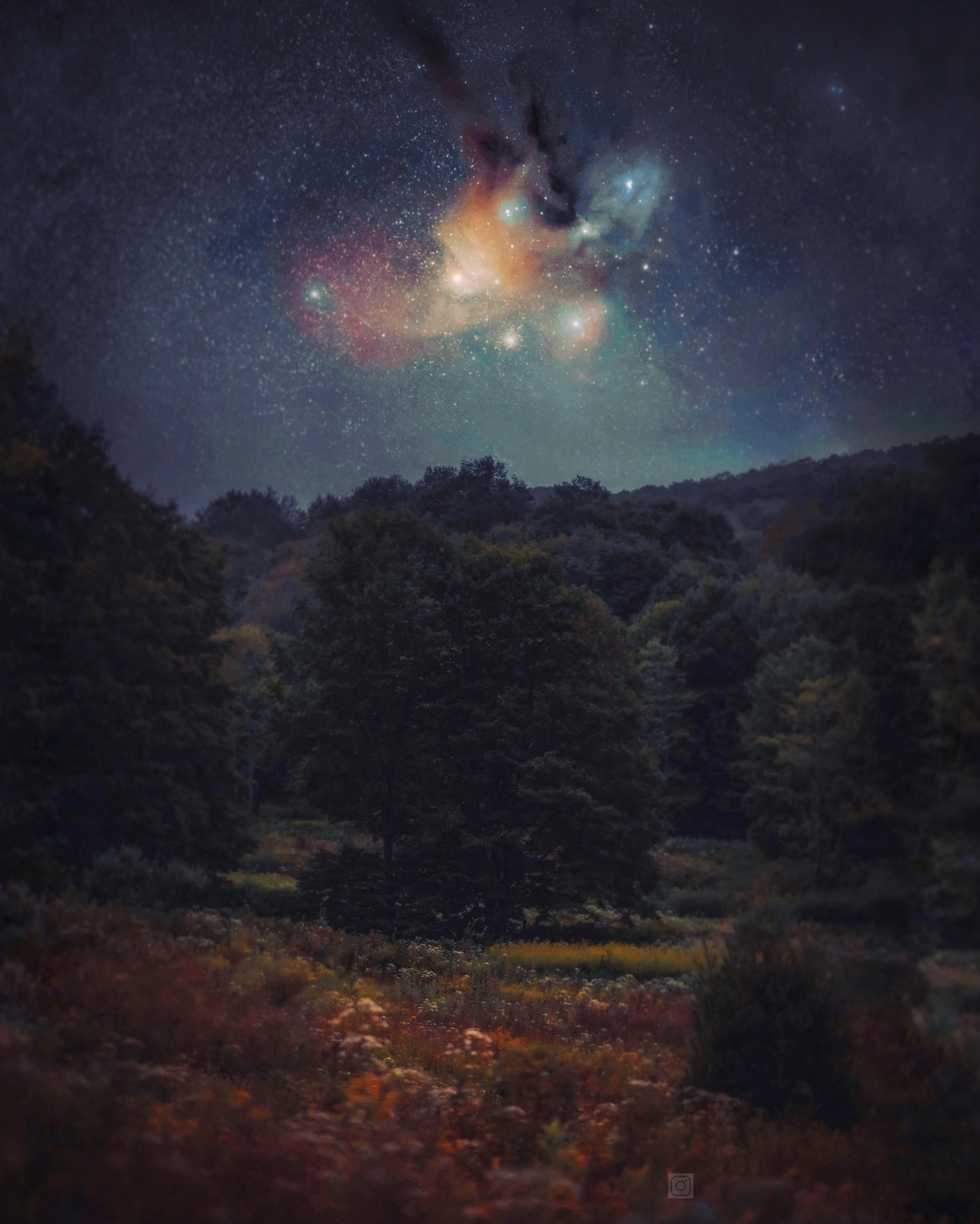Comments
MrJackDog OP t1_j8apse9 wrote
I photographed this in September 2022 under the dark skies of Highland County, Virginia, using a Sony A7III camera and a 85mm Sony GM lens. The camera I had astro-modified by removing a stock filter so it would be sensitive to red wavelengths present in the nebulae.
The image is a combination of three separate images: two exposures of the land at different focal lengths and one image of the sky, itself a stack of 60 separate 60 second images. For the sky images, the camera and lens sat on a star tracker, a portable mount that counters the earth’s rotation allowing for long exposures without star trails.
I shot an hour worth of 60 exposures with this set-up. After collecting all these exposures, I used a free program called Starry Sky Stacker to “stack” the images — compiling the data in the exposures together to refine the target and reduce noise.
After I shot the sky, I then shot the land using the same camera and lens from the same vantage point. I shot two 4 minute exposures for a focal blend of the foreground and background. Once I had all these images, I used masks in photoshop to blend all the images together for the final composite.
Astrophotography is a hobby with many variations and many purists. Some frown on these composite images - I shoot and enjoy many different types of astrophotography and no matter what the technique, my goal is the same: to share the same sense of awe that I feel when out under a clear dark sky taking in the cosmos.
For more of my work, check out my Instagram: @brennangilmorephoto
Baremegigjen t1_j8avr1q wrote
Spectacular combination of Earth and Sky!
zandy322 t1_j8b77lh wrote
Omg beautiful
curioushom t1_j8bulk8 wrote
Thanks for the excellent explanation! Do you mean that you used two focal lengths for the foreground or two focal planes to get sharpness front to back?
Amazing capture!
Any-Pomegranate-5121 t1_j8bwp4g wrote
absolutely beautiful
MrJackDog OP t1_j8bxpg6 wrote
The latter, same lens different focal points
curioushom t1_j8cl0iy wrote
Awesome, I love how it's in focus but still has a dreamy movement quality.
Elliot-Fletcher t1_j8cmcug wrote
Stunning composition, OP!
[deleted] t1_j8ef05u wrote
[removed]

AutoModerator t1_j8apqee wrote
Hi MrJackDog! Dont worry, this message does not mean that your post is removed. This is a reminder to quickly check your post to make sure it doesnt break any of our rules. Human moderators check the following --
some visible land, that is not silhouetted
no human-made objects (roads, boats, buildings) visible
no obvious people or animals visible
include location in post title
Thanks!
I am a bot, and this action was performed automatically. Please contact the moderators of this subreddit if you have any questions or concerns.